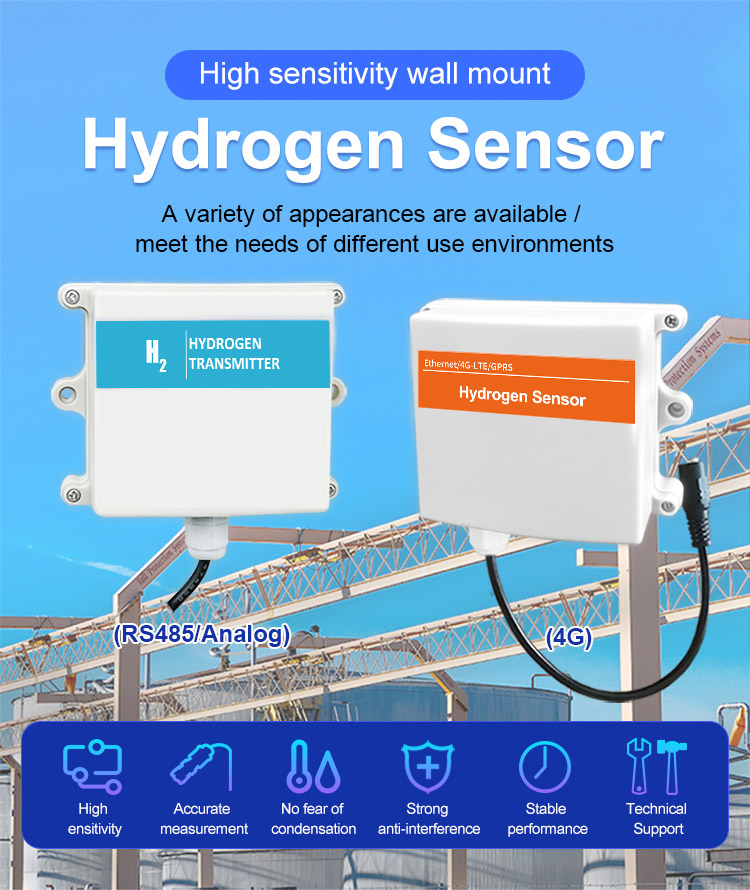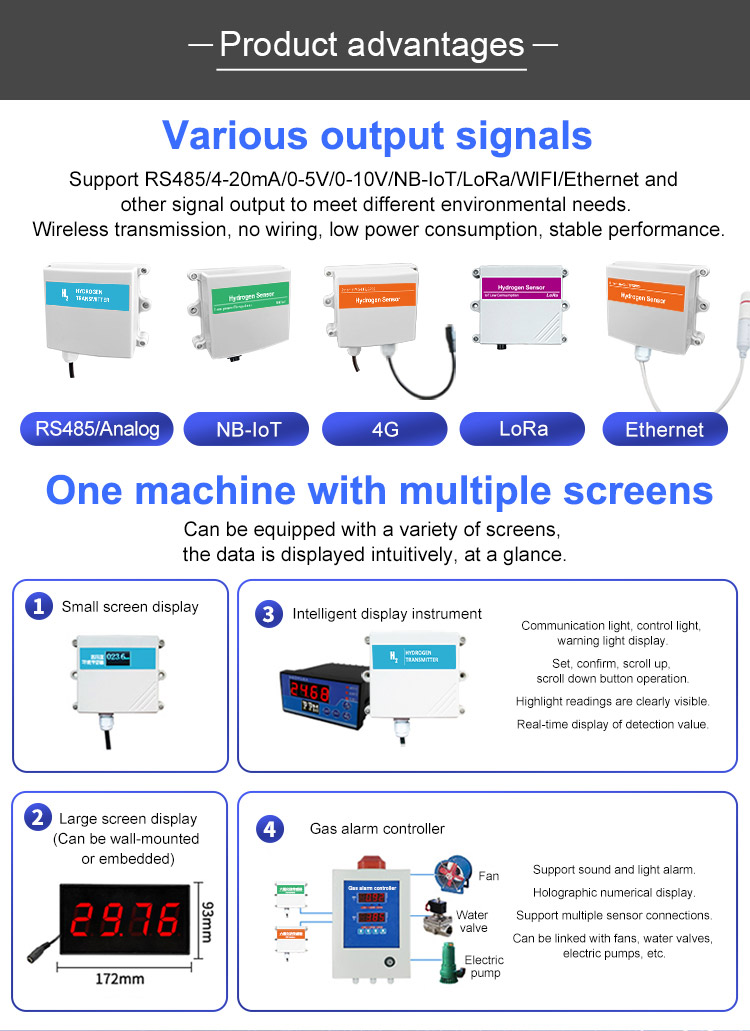H2 detector, commonly known as hydrogen gas detectors, have become an integral part of maintaining safety in various industries. These devices are specifically designed to detect the presence of hydrogen gas, which is highly flammable and poses significant risks if not properly monitored.

Working Principle
H2 detector utilize different detection technologies, including catalytic bead, thermal conductivity, and metal oxide semiconductor (MOS) sensors.
Catalytic bead sensors consist of a heated wire coil coated with a catalyst that reacts with hydrogen gas. When hydrogen comes into contact with the catalytic bead, it undergoes a chemical reaction, leading to a change in the electrical resistance of the wire. The detector measures this change and triggers an alarm or warning signal when the hydrogen concentration exceeds a certain threshold.
Thermal conductivity sensors operate by measuring the difference in heat transfer between a reference gas (typically air) and the target gas (hydrogen). As hydrogen has higher thermal conductivity than air, its presence alters the heat transfer characteristics of the surrounding gas mixture. The detector detects this difference and activates an alarm if the hydrogen concentration exceeds the predetermined level.
Metal oxide semiconductor (MOS) sensors use a thin film of metal oxide that reacts with hydrogen gas. The interaction between the hydrogen and the metal oxide causes a change in the electrical conductivity of the sensor. The detector continuously monitors this change and triggers an alert when the hydrogen concentration reaches or surpasses the set threshold.
Importance in Industrial Safety
The significance of H2 detector in industrial safety cannot be overstated. Hydrogen gas leaks pose serious threats such as explosions and fires, particularly in confined spaces. By incorporating H2 detectors into industrial environments, the potential dangers associated with hydrogen gas can be mitigated.

In industries involved in hydrogen production or usage, such as chemical plants, refineries, and laboratories, H2 detectors are essential. These detectors continuously monitor air quality for the presence of hydrogen gas, providing early warning signals if concentrations rise above safe levels. This enables immediate response actions, including evacuation or shutting down equipment, to prevent accidents or mitigate their consequences.
Furthermore, H2 detector play a vital role in safeguarding employees’ health and well-being. Extended exposure to hydrogen gas can result in respiratory issues, dizziness, and other harmful effects. By promptly detecting hydrogen gas leaks, the detectors ensure that workers are not exposed to dangerous concentrations, reducing the risk of health complications.
H2 detector also contribute significantly to preventing property damage and environmental pollution. Hydrogen gas leaks can lead to explosions, fires, and subsequent destruction of buildings, equipment, and infrastructure. By detecting potential leaks, H2 detectors facilitate timely interventions, minimizing the risks of costly accidents and collateral damage. Additionally, detecting and controlling hydrogen gas releases helps prevent environmental contamination and the negative impacts on ecosystems.
Moreover, H2 detector assist organizations in complying with safety regulations and industry standards. Many industries have specific safety requirements related to the usage and storage of hydrogen gas. By implementing H2 detectors, these organizations demonstrate their commitment to maintaining a safe working environment and adhering to regulations, thereby fostering a culture of safety consciousness.
Conclusion
H2 detectors serve a critical function in ensuring hydrogen safety in industrial settings. By providing early detection of hydrogen gas leaks, these devices help prevent accidents, protect employee well-being, prevent property damage, and preserve the environment. Incorporating H2 detectors as part of safety protocols is crucial for promoting a safe and secure working environment.